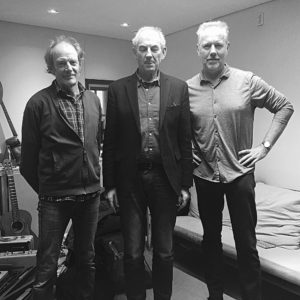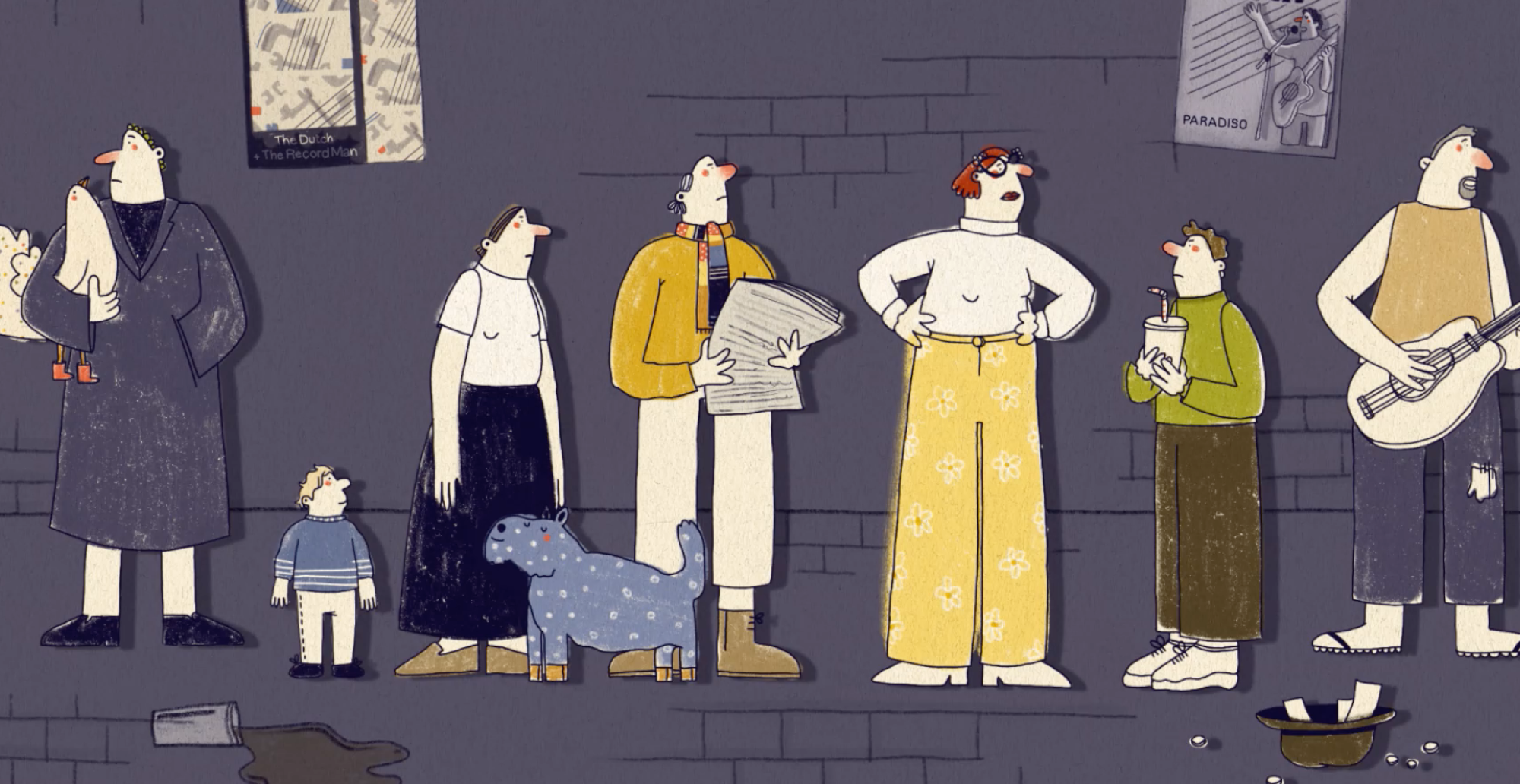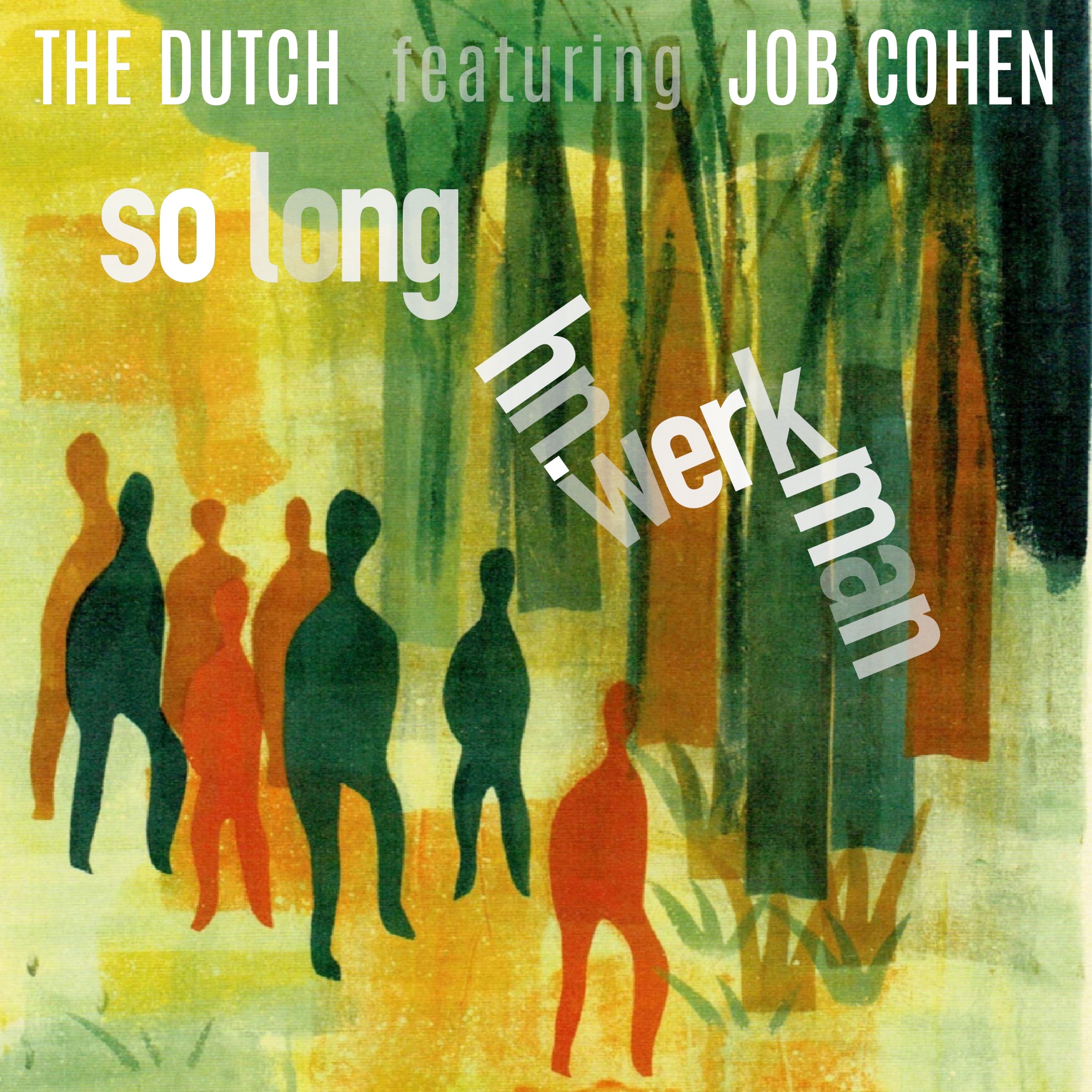The song kept growing.
The idea for Werkman came about in 2015. Darja and I visited the retrospective of the work of the printer and artist Hendrik Nicolaas Werkman in the Groninger Museum. He was killed seventy years ago by the Nazis, just before the end of the war. I was very impressed with what I saw. There are more musicians who have been inspired by Werkman (1). Most of the music that I heard is rather melancholy. You hear the toiling, the muddy clay, the heaviness of the Groningen landscape. The somewhat slow Groningen dialect also lends itself to that atmosphere in one way or another. But Werkman had a different effect on me.
Werkman is a phenomenon. Apparently a respectable citizen, a printer who tried to earn a living in the first half of the 20th century with birth announcements, club papers and similar commercial printed matter. But appearances are deceiving. Werkman was not humdrum at all. In addition to all that artisanal printed matter, he produced what he called “druksels”. He went over the paper with the inking roll of his press and produced unique art. You can see from his graphic and abstract work that he was well aware of the modern art movements. Nevertheless, you recognise his work immediately. I find these druksels completely detached from the Groningen clay: there is a kind of light shining through them, they are optimistic and definitely belong to the avant-garde of the time. What a restless seeker too: whenever his friends from the artists’ circle De Ploeg took to more traditional themes and styles, he encouraged them to keep experimenting.
What happened was…
Two years after the exhibition in Groningen, I wrote the song that suited Werkman: So Long H.N. Werkman. A three-quarter measure, or sixth-eighth, I never know, anyway, with the rhythm of the printing press and the color of the druksels. I wrote a text full of themes from his work: stamps, chimneys, The Next Call, horses, Descent into the Maelstrom, the Chassidic legends. And the song kept growing.
In search of options for the video clip, I approached the Groninger Museum with a demo of the song. They told me that the 100th anniversary of De Ploeg happens to be celebrated in 2018. They suggested to add the song to the audio tour of the major exhibition “Avant-garde in Groningen, De Ploeg 1918-1928”. And they offered to support the video clip of the song, together with the 100 years of De Ploeg Foundation. Klaas and I met with Iris Frankhuizen, a young animator who also turned out to be a fan of Werkman and was delighted to make a video clip. Iris went to work and delighted us with a living book concept. (2)
And the song kept growing.
Somire mare maksi
I found a Dadaist poem by Werkman himself, that I wanted to use. But who should recite that poem? I thought of Job Cohen: not everyone knows that, besides being a politician, scientist and former mayor of Amsterdam, he is the Most Beautiful Voice of the Netherlands. I approached Rubinstein Publishers, where Job Cohen speaks audiobooks, and promised to bake a legendary apple pie in return.

Within no time Dik Broekman, the publisher, introduced me to Job, who immediately agreed to support the project. Jan and I went to Rubinstein at the beginning of March, equipped with a home-made apple pie. In the back of the building was a small recording studio. Job installed himself with sound director Floor Minnaert. A detail that might sound unbelievable, but I share it anyway: on the wall of the studio was a Werkman. Job recited the poem, Jan and I looked and saw that it was good.
And the song kept growing.
Somire mare maksi
Conprise la contaksi
A monde microkaksi,
Parfaite satisfaksi
Valore non valaxi
Presente par sequaxi
Colosso la colaxi
Un grande stupéfaxi
Aquiso quasi quaksi
Stupido adoraksi
Subito un injaksi
Profonde profilaksi
Ridicula loquaxi
Un imposante smaksi
Regarde son pretaksi
Devalde educaxi
Retorica redaksi
Perfecte superflaxi
A basso immédiaxi
Salvo sonoso claxi
Then there was the false note. When we went to work in the Mailmen studio a month later, I asked producer Martijn Groeneveld if he heard a false note in So Long H.N. Werkman. Of course he heard that. It is the false note as a symbol of imperfection, yes, even more, of the vulnerability of existence itself. “That’s not a false note,” Martijn said, “that’s a dissonant.”
And the song kept on growing.
Finished?
As part of the exhibition in the Groninger Museum (you can see and hear it in both the audiotour and the auditorium), it seems finished now. But we cannot fully guarantee that.
May 26, 2018
- For example, Meindert Talma made a beautiful song cycle about Werkman together with the Melisma Saxophone Quartet; Hans Dagelet created a Werkman Suite with the Noordpool Orchestra; Ellen Dijkhuizen composed the cycle “Under the road and about the locht“, modern-classical chamber music inspired by Werkman’s Chassidic legends.
- I want to apologise to all who believe art is sacred and untouchable, that you shouldn’t touch Werkman’s work in any way. In the video of So Long H.N. Werkman Werkman’s figures move to the rhythm of the song; for some, that will be a profanation: what would Werkman think of it? Of course we don’t know, but we believe it’s also not important. This video is a new work of art in itself, one that elaborates on Werkman’s oeuvre. Werkman’s playfulness and experimental drive make us feel that our interpretation is justified. Werkman will probably not turn around in his grave in the cemetery of Bakkeveen. Or maybe -hopefully- he will, from pleasure.


